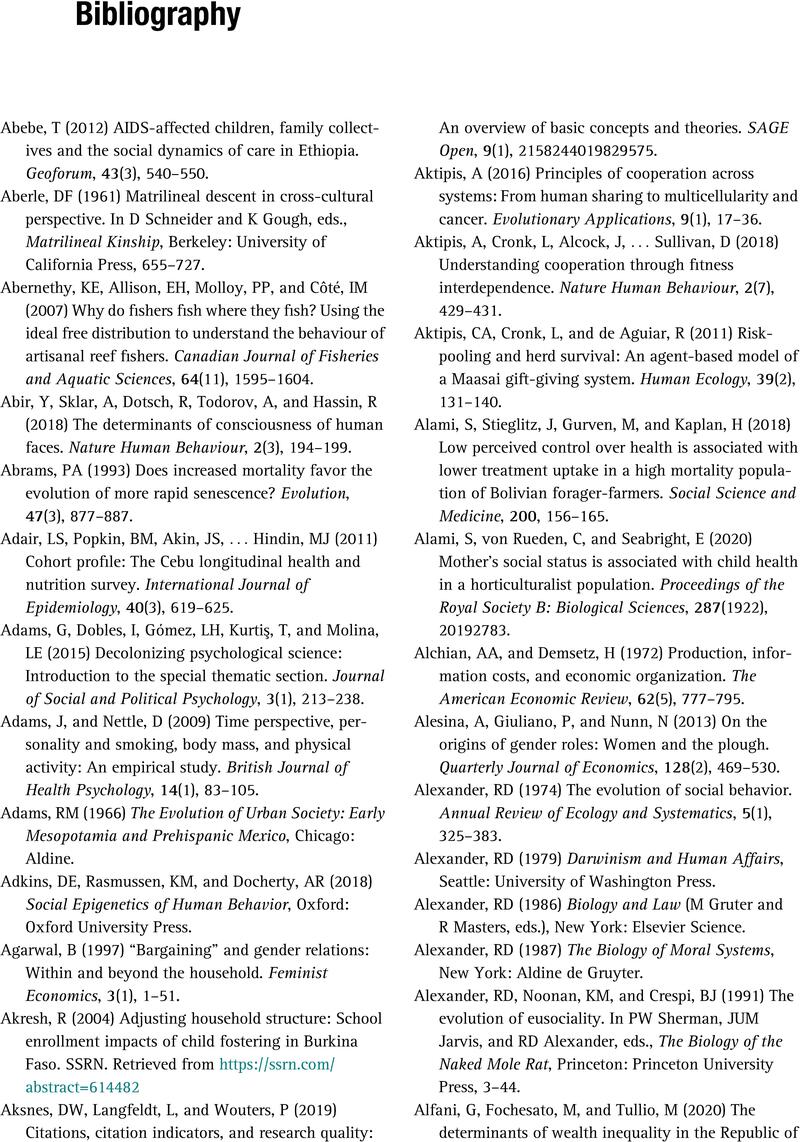Book contents
- Human Behavioral Ecology
- Cambridge Studies in Biological and Evolutionary Anthropology
- Human Behavioral Ecology
- Copyright page
- Contents
- Contributors
- Foreword: Reflections on Five Decades of Human Behavioral Ecology
- 1 Human Behavioral Ecology
- 2 Life History
- 3 Foraging Strategies
- 4 Modes of Production
- 5 Cooperation
- 6 Division of Labor
- 7 Status
- 8 Political Organization
- 9 Mating
- 10 Marriage
- 11 Parental Care
- 12 Allocare
- 13 Demography
- 14 Human Biology
- 15 Cultural Evolution
- 16 Evolutionary Psychology
- 17 The End of Human Behavioral Ecology
- Bibliography
- Index
- References
Bibliography
Published online by Cambridge University Press: 07 March 2024
- Human Behavioral Ecology
- Cambridge Studies in Biological and Evolutionary Anthropology
- Human Behavioral Ecology
- Copyright page
- Contents
- Contributors
- Foreword: Reflections on Five Decades of Human Behavioral Ecology
- 1 Human Behavioral Ecology
- 2 Life History
- 3 Foraging Strategies
- 4 Modes of Production
- 5 Cooperation
- 6 Division of Labor
- 7 Status
- 8 Political Organization
- 9 Mating
- 10 Marriage
- 11 Parental Care
- 12 Allocare
- 13 Demography
- 14 Human Biology
- 15 Cultural Evolution
- 16 Evolutionary Psychology
- 17 The End of Human Behavioral Ecology
- Bibliography
- Index
- References
Summary

- Type
- Chapter
- Information
- Human Behavioral Ecology , pp. 420 - 515Publisher: Cambridge University PressPrint publication year: 2024



